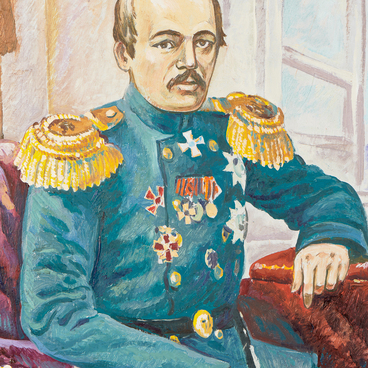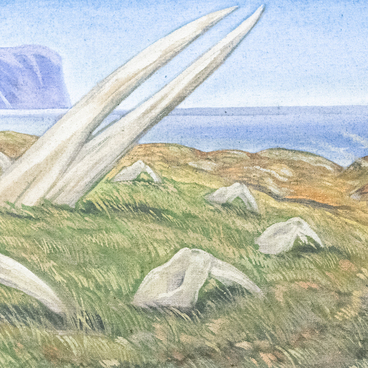The pestle from the collection of the Kamchatka Regional United Museum was used for making tolkusha, a traditional dish of the indigenous peoples of Kamchatka, including the Koryaks, who are native to the northern part of the peninsula. The preparation of a sacrificial tolkusha was timed to coincide with important festivals of coastal Koryak nymylans, in particular “Khololo” (“Ololo”) at the end of sea beast hunting season.
Alexandra Trifonovna Urkachan (1940 –2014), a researcher and collector of folklore, listed in her guideline the ingredients of the tolkusha at the Ololo feast of the Lesnovsky Koryaks. She mentioned melted seal fat, dried caviar, wild potato tubers, dried bay willow herb, and mossberry. In addition to the above-mentioned products, the tolkusha of the Karaginsky Koryaks usually included cone kernels, cowberries, cloudberries, and blueberries. Sometimes, Kamchadals added bulbs of Kamchatka fritillary. The researchers, who studied the recipes, noted that all the ingredients were pounded thoroughly and long with pestles in the process of cooking, so that the tolkusha would become a homogeneous mass.
All of the above components are typical natural resources that indigenous people have carefully utilized since ancient times. Including them in a ritual dish can be understood as an act of thanksgiving. As food was one of the forms of sacrifice and peace offering in fishing rituals, the very process of its preparation was considered as a magical act. Tolkusha was often used in the ritual.
The works of Innokenty
Stepanovich Vdovin on the Koryak culture mentioned that “sacrificial food was
placed on the skin of a seal. The first to be thrown into the fire were bundles
of birch twigs symbolizing animals”. The local people said at this moment,


